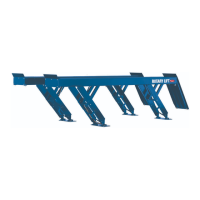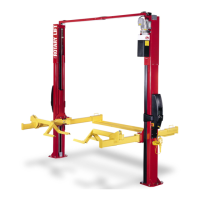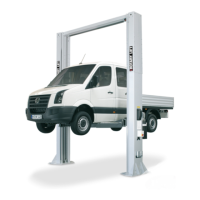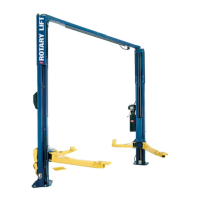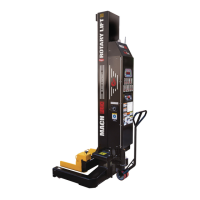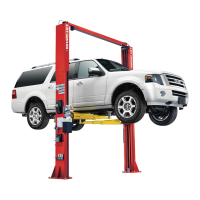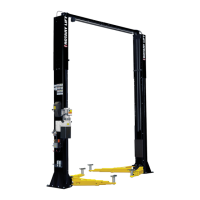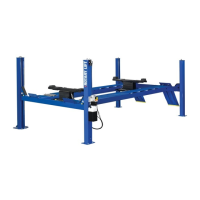
Do you have a question about the Rotary 100 Series and is the answer not in the manual?
| Brand | Rotary |
|---|---|
| Model | 100 Series |
| Category | Lifting Systems |
| Language | English |
Details on how the lift is shipped and its total weight.
Procedures for lifting the packed unit using forklifts or cranes.
Requirements for storing the packed lift in a covered, sheltered place.
Guidelines for stacking multiple packs safely and securely.
Instructions for safely opening the shipping pack and checking contents.
Essential safety information for operators and maintenance personnel.
Guidance on keeping the manual with the lift for future reference.
List of relevant standards and directives the lift complies with.
Description of the base, platforms, ramps, and their connections.
Details of the hydraulic cylinders and control panel.
Overview of the safety features integrated into the lift system.
Specifies how and where the scissor lift should be operated.
Prohibited actions and risks associated with improper operation.
Notes on internal company procedures for safety and environment.
Key operational parameters like capacity, lift time, weight, and temperature.
Details on the motor's power, voltage, frequency, speed, and absorption.
Information about the hydraulic pump, pressure, and relief valve.
Specifies the type of hydraulic fluid and filling instructions.
Critical safety information to prevent injury and damage during operation.
Detailed explanation of safety devices like buzzers, switches, and valves.
Critical safety warnings and requirements before installation.
Considerations for fixed versus mobile installation and vehicle placement.
Steps to ensure the lift is in good condition before loading a vehicle.
Guidelines for correctly positioning and securing vehicles on the lift.
Step-by-step instructions for safely raising the vehicle.
Actions to take before lowering the lift to ensure safety.
Procedures for safely lowering the vehicle and the lift.
Steps for safely removing the vehicle from the lift.
Routine checks to be performed daily for safety and performance.
Tasks for weekly inspection to ensure lift integrity.
Lubrication and checks required on a monthly basis.
Periodic checks for fluid levels, hoses, seals, and anchor bolts.
Steps to verify the lift's operational readiness after installation.
Procedures for testing the hydraulic system for leaks and air pockets.
Guidelines for environmentally friendly disposal of fluids and materials.
Instructions for disposing of packaging materials according to local regulations.
Compliance with environmental regulations for oils, grease, and chemicals.
Proper disposal methods for metal parts and electronic waste.
Common problems and solutions related to the electric motor not running or raising.
Troubleshooting for oil leaks, pump failures, or incorrect motor voltage.
Solutions for issues like lift failing to raise or not lowering.
Verifying nameplate, labeling, and manual completeness.
Ensuring the detailed operating instructions are present and readable.
Verifying the presence and readability of warning labels.
Checking protection measures against unauthorized operation.
Inspecting lifting, tilting, switching, and driving functions of actuators.
Testing emergency shutdown and drainage systems.
Verifying the function and reliability of signalling devices.
Inspecting spirit level, supports, spindles, and bottom pan condition.
Checking for cracks, deformation, and wear in the supporting structure.
Inspecting load suspension components like safety fences and roll-off protection.
Checking wire ropes, sheaves, and pulleys for wear and damage.
Inspecting chains and linkings for wear, cracks, and securing.
Checking spindles, nuts, racks, and pinions for wear and damage.
Inspecting oil reservoir, lines, hoses, and cylinders for leaks and condition.
Verifying pneumatic lines, hoses, cylinders, and relief valves.
